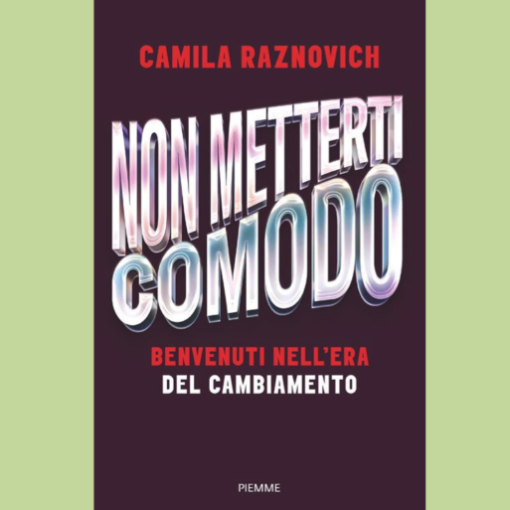“…then observe how many wild almond trees will become covered with flowers and will bend their fragrant branches” – Virgilio, Georgiche
February, the almond tree has blossomed! In the coldest month of the year, an explosion of pinkish-white flowers reminds us that spring is near and will return soon as every year; in the eternal cycle of life; nature renews itself, bearer of hope.
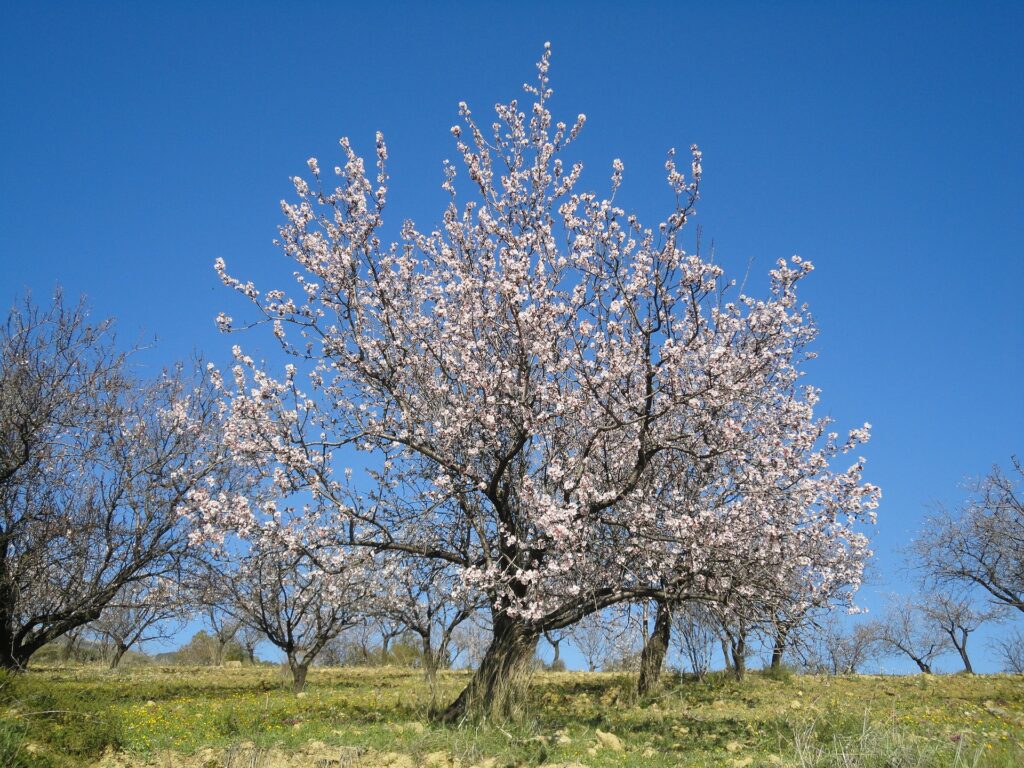
The almond tree, Prunus dulcis (Mill.) D.A. Webb1967, is also known asè conosciuto anche come Prunus amygdalus Batsch and Amygdalus communis L.
DESCRIPTION
It is a small deciduous tree belonging to the Rosaceae family. It reaches 5-10 m, has slow growth, and can become very long-lived, even centuries-old.
It is a very rustic plant, a lover of warm climates, capable of resisting conditions of prolonged drought, which grows well in poor and marginal soils, enhancing them. It can be used as a rootstock for itself, for peach, apricot and plum trees and can thus give rise to plants that produce fruits of four different species. The Almond tree has an erect, very branched trunk and the bark is dark gray in color that tends to split into longitudinal cracks. The branches sometimes have thorns in the upper part, especially in the re-wild specimens.
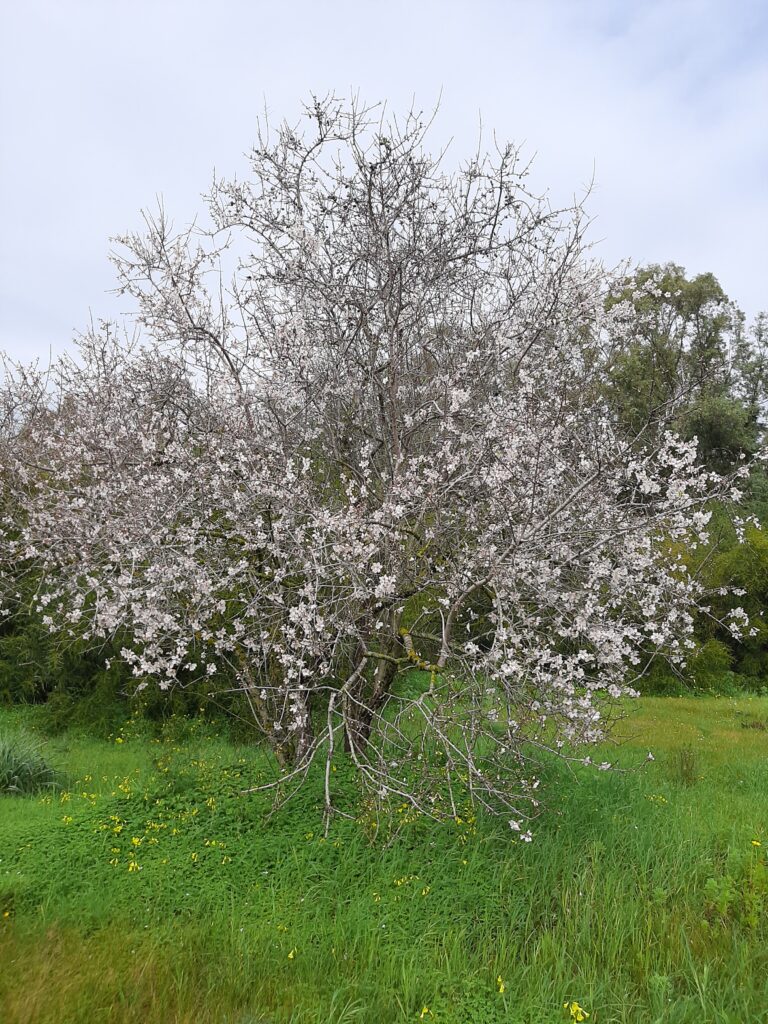
The leaves, arranged alternately on the branch, are very similar to those of the peach tree, but narrower, lighter, lanceolate and serrated.
The flowers have 5 petals; solitary or in pairs, they appear before the leaves and bloom from January to March with a color that fades delicately from white to pink.
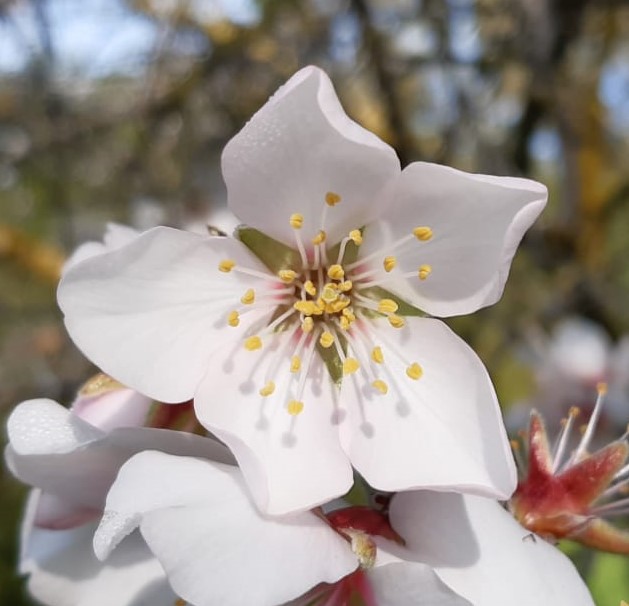
Fertilization is entomophilic, that is, it occurs through insects. The fruit is an elongated oval drupe, with a hairy green surface containing the almond, which is the seed characterized by a woody shell.
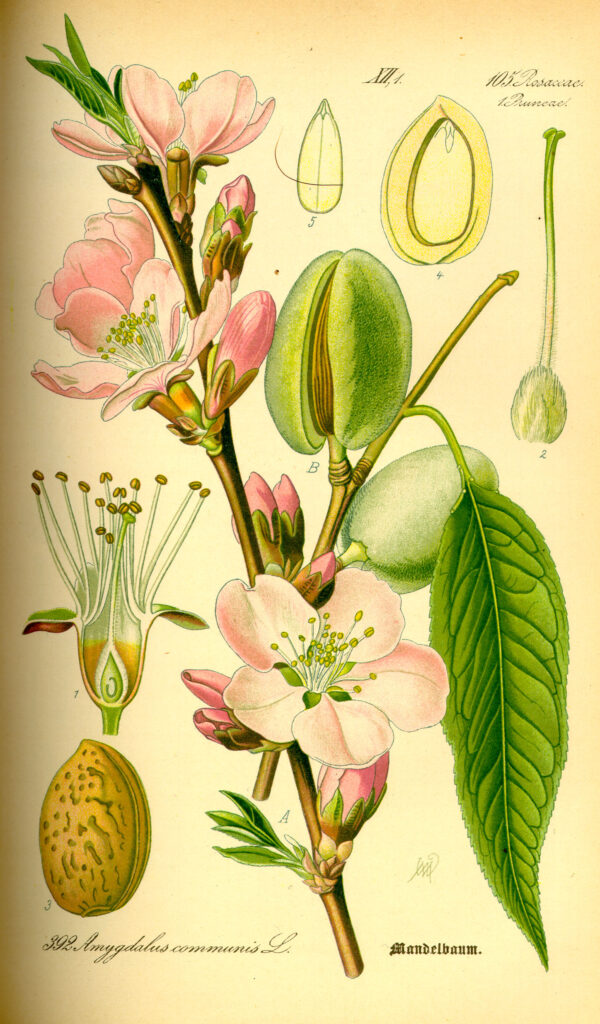
The almond tree is grown for its seeds, the almonds, which are harvested in summer, August September, when, when ripe, they fall from the tree.
It is also a melliferous plant, but the production of honey is limited to some areas of the south where it is more present and where the temperatures remain at values that allow the bees to forage during such an early flowering (January-March).
Originally from southwestern Asia, it spread first in ancient Greece and Sicily brought by the Phoenicians, so much so that the Romans called it “Greek walnut”, then in the regions of the Roman Empire. Thanks to the Arabs it was then spread throughout the Mediterranean basin It is currently widespread all over the world.
According to some scholars, almond trees were one of the first fruit trees to be cultivated, even before the invention of grafting. Domestic almond trees appear already in the first part of the Bronze Age (3000-2000 BC). Some almonds were found in Egypt in the tomb of Tutankamon, dating back to about 1325 BC.
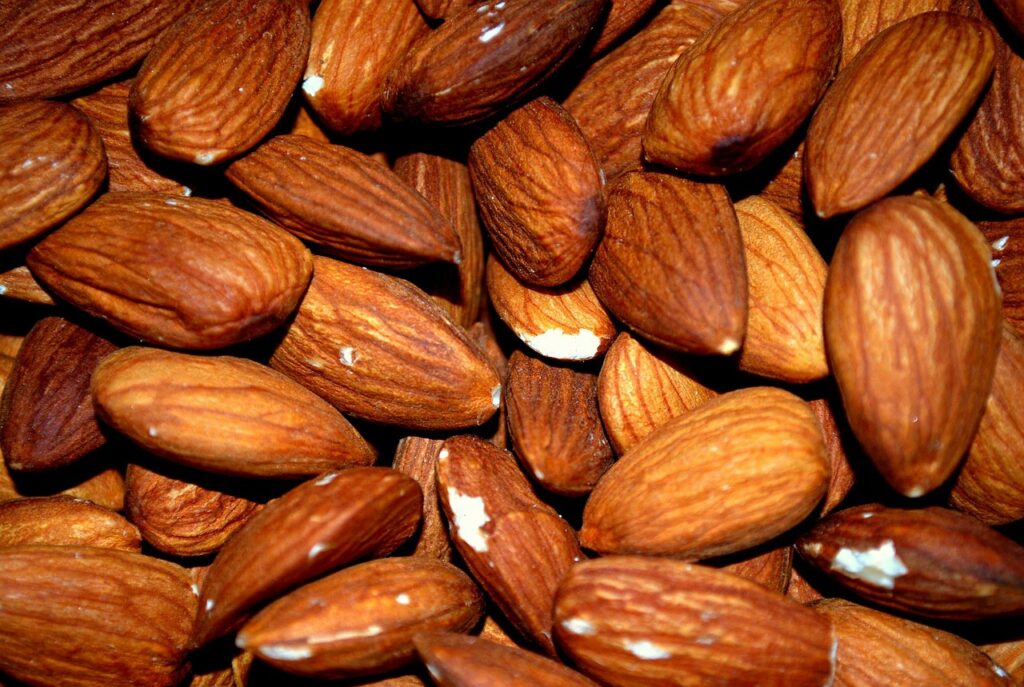
The cultivation of the almond tree and the consequent production of almonds represents an important economic sector. Depending on the characteristics, 3 varieties of cultivated almonds are distinguished:
- bitter, the seeds of which contain hydrogen cyanide;
- dulcis, whose seeds are used in food, in the confectionery industry and for the extraction of officinal almond oil;
- fragilis (or sticciamani), with a sweet seed, but with a non-woody shell that can easily be crushed by hand.
The cultivation of the almond tree in the areas of highest production, given the great rusticity of the plant, has given rise to numerous cultivars. The botanist Giuseppe Bianca (1801-1883) was able to classify about 800 of them present in Sicily, of which he extensively described characteristics, usefulness, uses, cultivation and harvesting methods, commercial data in his “Manual of the cultivation of the Almond in Sicily” (1872) .
Many cultivars have unfortunately been lost; currently about 600 indigenous varieties have been registered, of which only 120 are registered in the National Register of Fruit Plants.
In Italy, the areas planted with almond trees are found in the south, in particular in Puglia and Sicily, which is the region with the greatest production. The species is also present in Sardinia, Lucania, Calabria, Campania, and Liguria in the North, sometimes cultivated in small rational plants, but often present as a plant for family production. America, Australia, and Italy are the largest producers in the world
PROPERTIES, USES AND TRADITIONS
History and tradition come together, passing on numerous uses aimed at satisfying food, medicinal and cosmetic needs, as well as spiritual and magical.
Sweet almonds have excellent dietary virtues as they contain high percentages of proteins and vitamins, especially those of group B and vitamin E, fats, sugars and mineral oils such as potassium and magnesium. Given their high lipid content, therefore, they are an excellent source of energy. They are considered anti-anxiety, improve mood, help the intestine and concentration. The bitter almond also has a substance (amygdalin) containing hydrogen cyanide, which is very poisonous even in small quantities. It must therefore be used with extreme caution both in pharmacies and in pastry shops.
Throughout the Mediterranean basin, almonds are the main ingredient of confectionery production which, respecting local customs and traditions linked to an essentially rural society, has given rise to a great variety of products, different and identifying even within of individual communities. Almond is in fact the only ingredient present in at least one Traditional Agricultural Product (PAT) of every Italian region. From ground almonds, a flour is obtained which is the basic ingredient of marzipan and almond paste, the flagship of the Italian and Mediterranean confectionery industry. Just as Panforte, ricciarelli, crunchy, sweet nougat and sugared almonds are produced with whole almonds as a symbol of fertility and prosperity.
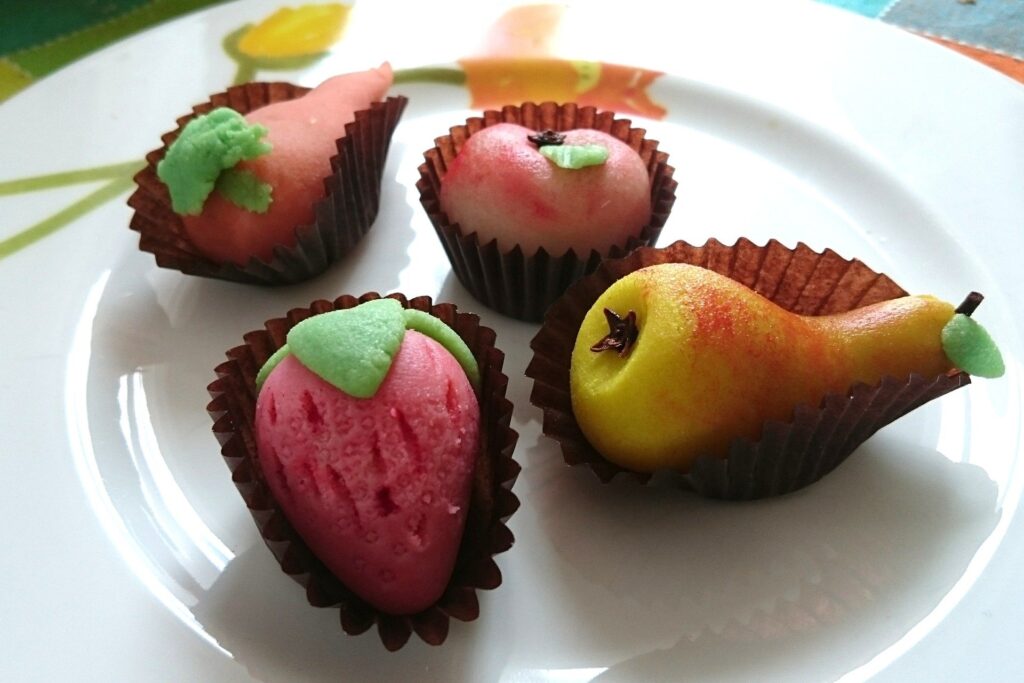
The emollient, refreshing and laxative power of almond is instead widely used in pharmacies and cosmetics. From the cold pressing of sweet almonds an oil with a regenerating effect was obtained, to heal the skin and improve or prevent the appearance of blemishes such as stretch marks. Sweet almond oil for food use promotes the proper functioning of the intestine and acts as a mild laxative. In perfumery, bitter almonds were used to prepare soaps.
Folk medicine exploiting the regulating, emollient and anti-inflammatory properties of the digestive system recommended the preparation of a digestive juice with bitter almonds and sweet almond oil. Insomnia was treated with a decoction with a calming and relaxing effect obtained from the shells. The infusion of almond leaves was recommended against coughs.
The use of the almond tree in magic rituals and practices is instead found in the preparation of a love elixir, obtained from a decoction of freshly picked almond blossom with the addition of a pinch of rosemary, to be offered as a gift to the object. of his own desire.
In Sardinia an amulet called “s’arghentu bibu” was prepared with the almond against the evil eye: the seed was extracted from the shell through a small hole, filled with a few drops of mercury and a little flour, and then closed the hole with the wax. Everything was wrapped with a drawstring.
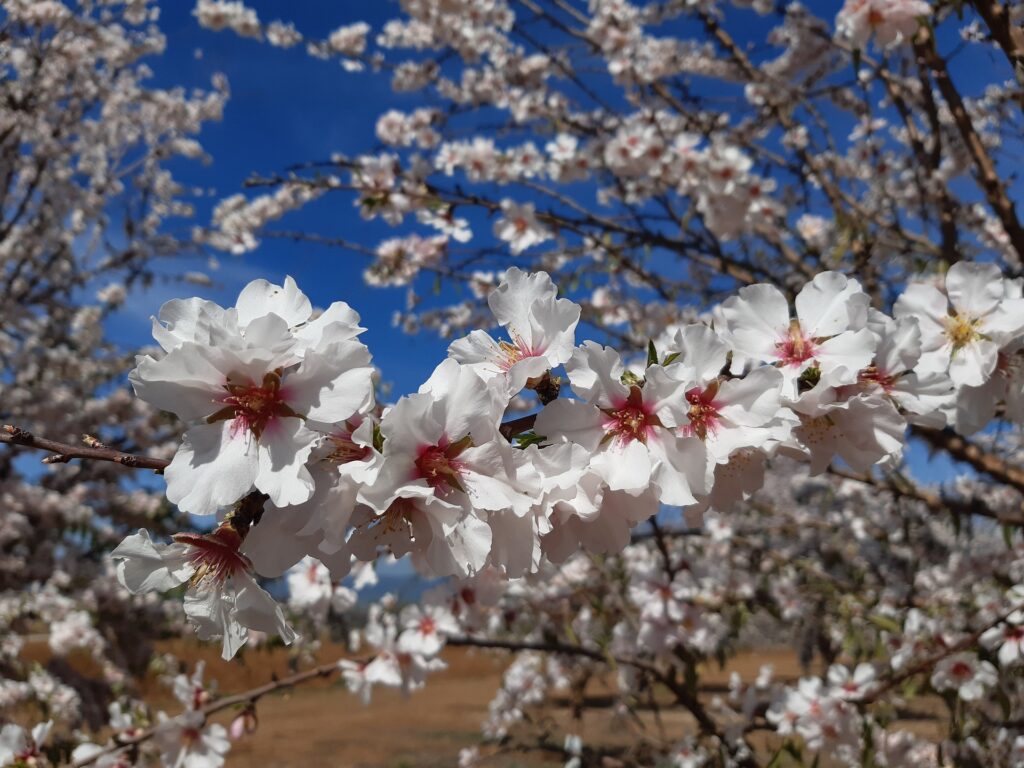
Credits
Author: Maria Beatrice Lupi. A naturalist and expert in training, planning for sustainable development, participatory methodologies, and European planning. Currently, she is involved in dissemination and education for sustainability.
Translation by Maria Antonietta Sessa



